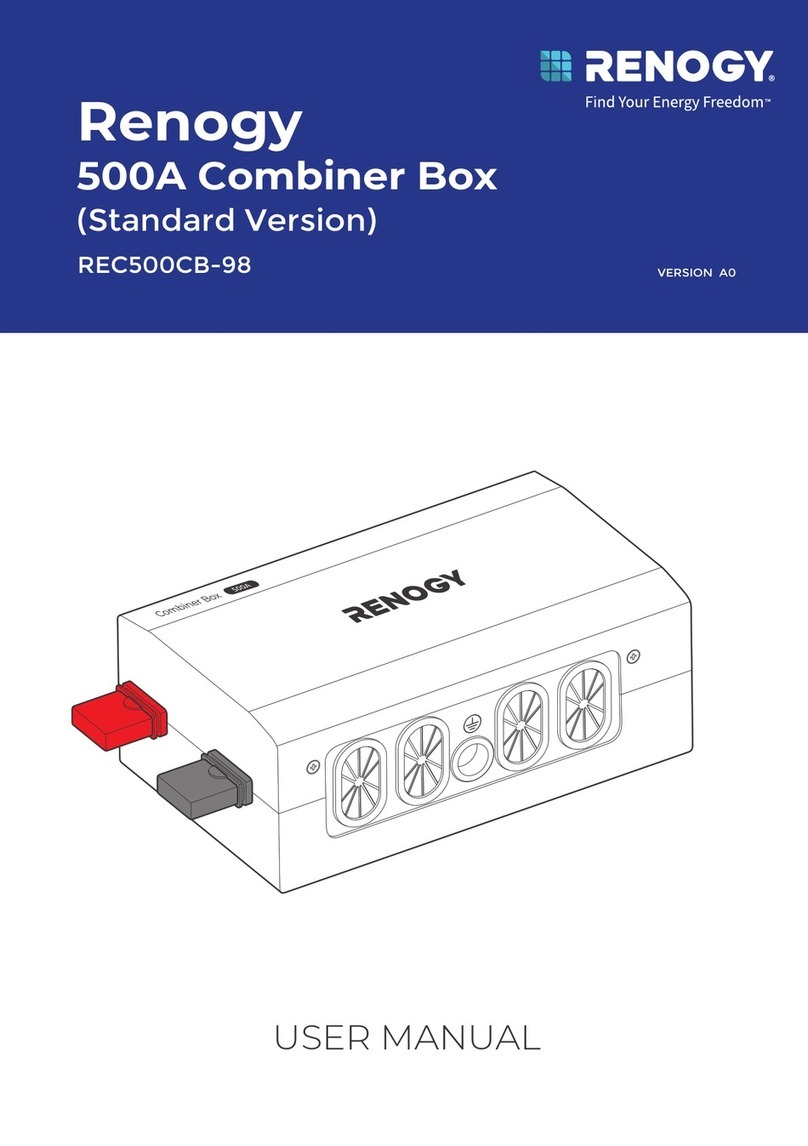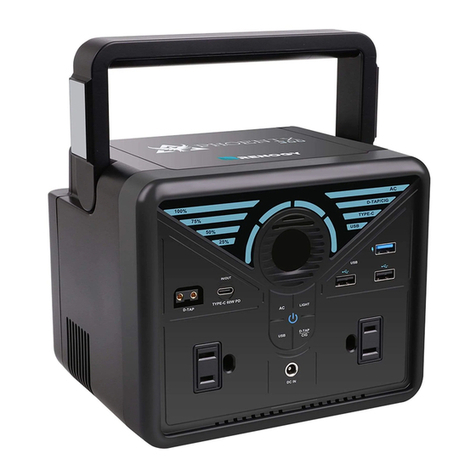
Symbols Used................................................................................................................................ 1
What’s In the Box?.......................................................................................................................... 1
Optional Accessories ...................................................................................................................... 1
Get to Know RENOGY 1000 Portable Power Station ........................................................................... 2
LCD Display ................................................................................................................................... 3
Environmental Conditions .............................................................................................................. 3
Turning On/O............................................................................................................................... 4
Communication with DC Home........................................................................................................ 4
Bluetooth Connection........................................................................................................................................4
How to Customize Parameters ..........................................................................................................................4
How to Charge by Solar Panels ........................................................................................................ 5
How to Charge by AC Power ............................................................................................................ 5
How to Charge by Car ..................................................................................................................... 5
How to Power Your Devices ............................................................................................................. 6
USB-A/USB-C Devices ........................................................................................................................................6
Car-Powered Devices via CIG.............................................................................................................................6
AC Devices ..........................................................................................................................................................7
Automatic Power-O...................................................................................................................... 7
Standby Power Supply (SPS)........................................................................................................... 7
Parallel Connection........................................................................................................................ 8
Strip Lights Operation .................................................................................................................... 8
Troubleshooting ............................................................................................................................ 9
Specifications.............................................................................................................................. 10
General .............................................................................................................................................................10
Battery ..............................................................................................................................................................10
Input .................................................................................................................................................................10
Output ..............................................................................................................................................................10
Maintenance & Storage................................................................................................................. 11
Inspection.........................................................................................................................................................11
Cleaning............................................................................................................................................................11
Storage..............................................................................................................................................................11
Important Safety Instructions....................................................................................................... 12
General Safety Information .............................................................................................................................12
Portable Power Station Safety.........................................................................................................................12
Charging Safety ................................................................................................................................................12
Discharging Safety ...........................................................................................................................................12
Solar Charging Safety ......................................................................................................................................12
Renogy Support........................................................................................................................... 13
Warranty..................................................................................................................................... 13
Table of Contents































